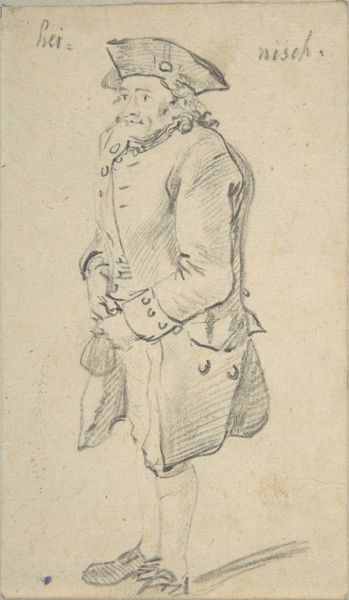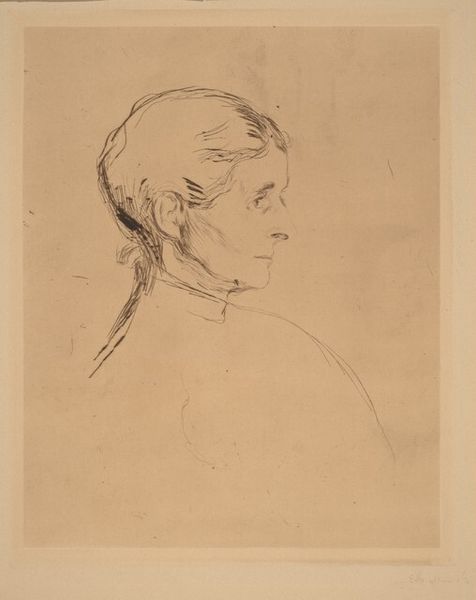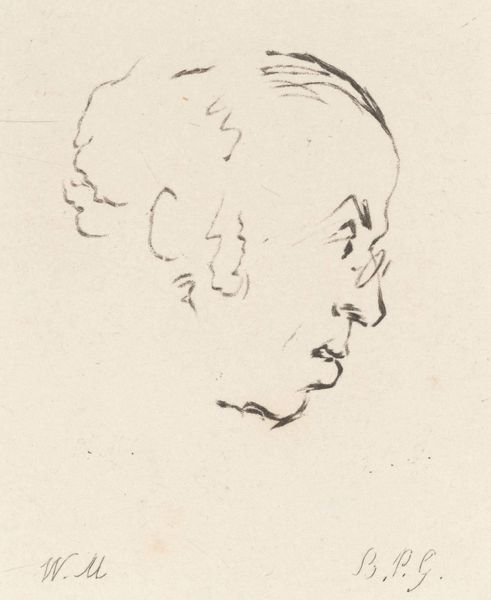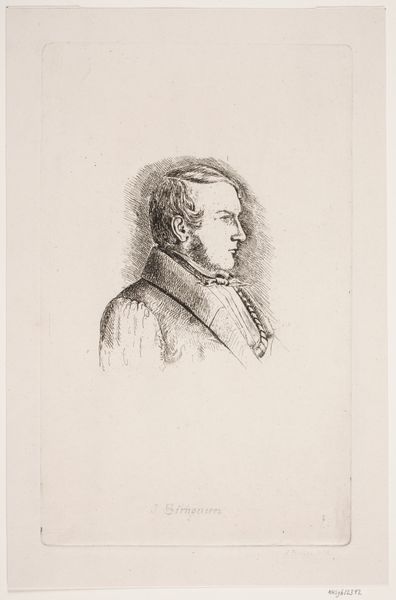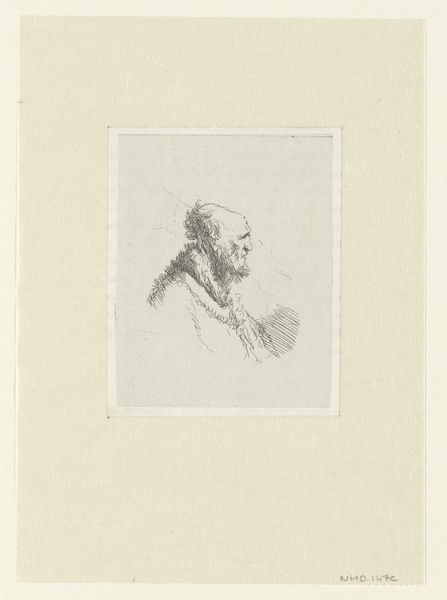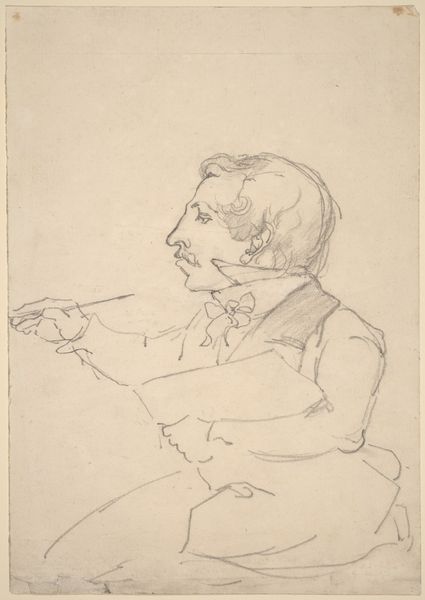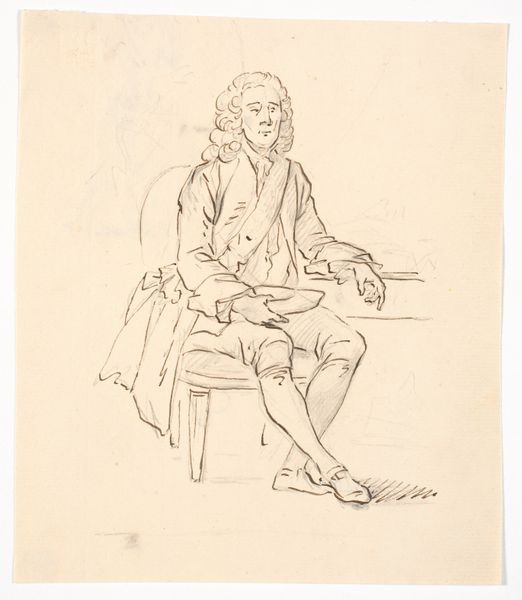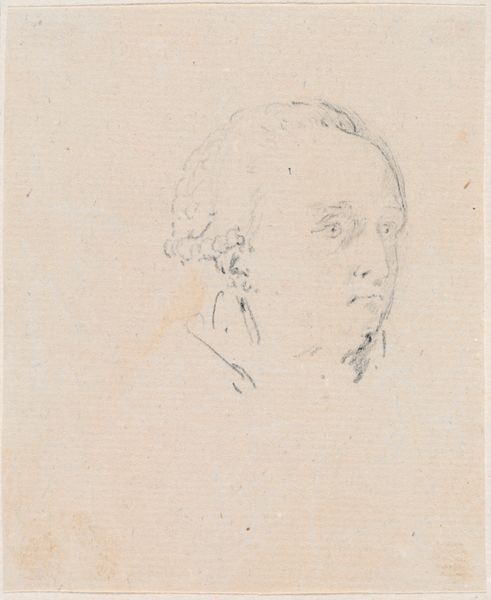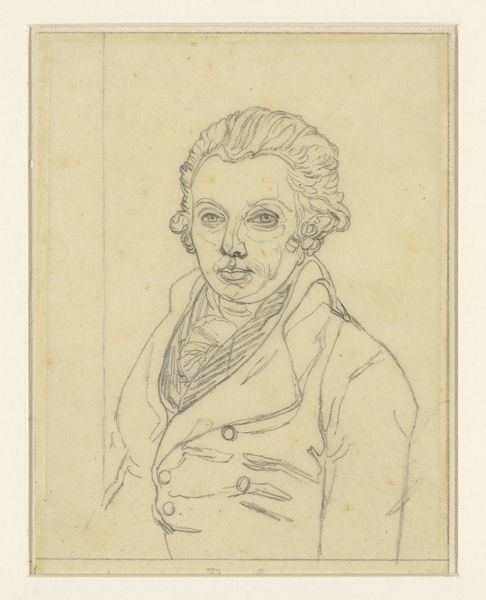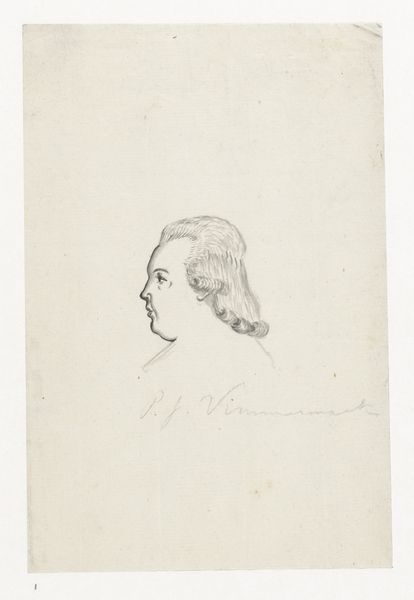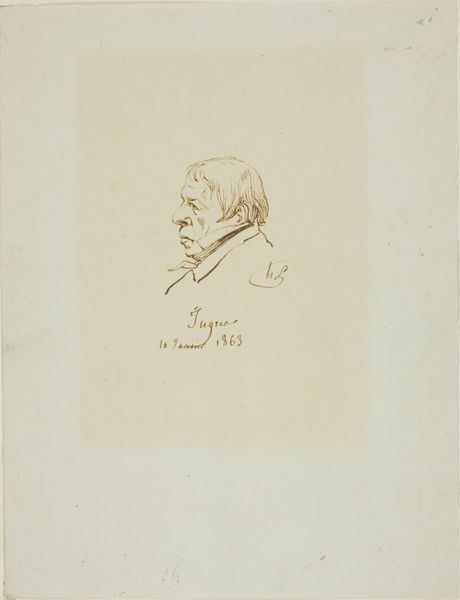
Dimensions: plate: 4 11/16 x 3 3/16 in. (11.9 x 8.1 cm) sheet: 5 5/16 x 3 11/16 in. (13.5 x 9.3 cm)
Copyright: Public Domain
Editor: Here we have Henry William Bunbury's engraving, "Oliver Goldsmith," likely created between 1765 and 1775. It’s a rather unflattering portrait, almost a caricature, but something about its directness is quite charming. What do you see in this piece, beyond just a funny face? Curator: Well, it's crucial to remember the social function of caricature during this period. Beyond simple humor, it served as a potent form of social commentary. This wasn't merely about poking fun; it was a tool, often wielded to critique power, expose societal hypocrisy, and even challenge established norms. Consider who had access to this image and how it might have shaped their perception of Goldsmith. What kind of message do you think Bunbury was trying to convey about Goldsmith's status or character? Editor: I guess I hadn't considered that. I was mainly focused on the, admittedly, rather large nose! But if we're looking at it critically, maybe it speaks to the artist poking fun at the elitism of the upper class, depicting him as rather unrefined. Is there something inherently political about how one chooses to portray another? Curator: Precisely! Consider the implications of controlling someone's image, especially someone like Goldsmith, who had some social standing. Even a seemingly harmless caricature can be read as an attempt to undermine their authority or standing within the societal hierarchy. Moreover, how does this image intersect with contemporary debates about representation and the gaze? Is it empowering, or does it perpetuate harmful stereotypes, even under the guise of humor? Editor: That's a fascinating perspective. I initially saw this as just a funny portrait, but I now realize that images like these were never neutral. It’s an important lesson about considering power dynamics within art. Curator: Exactly! The layers of meaning are deeply interwoven with the context of the time. It highlights how visual culture shapes our understanding of individuals and their roles in society, something still very relevant today.
Comments
No comments
Be the first to comment and join the conversation on the ultimate creative platform.

